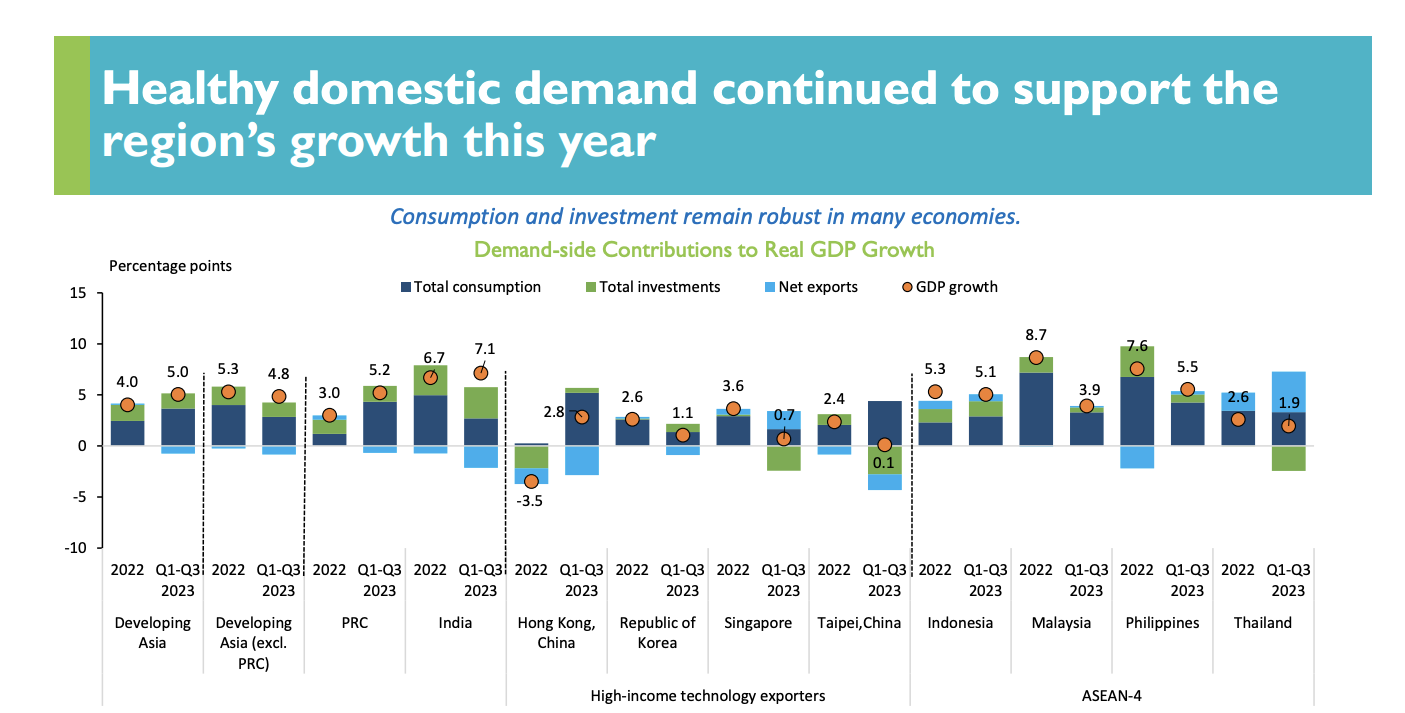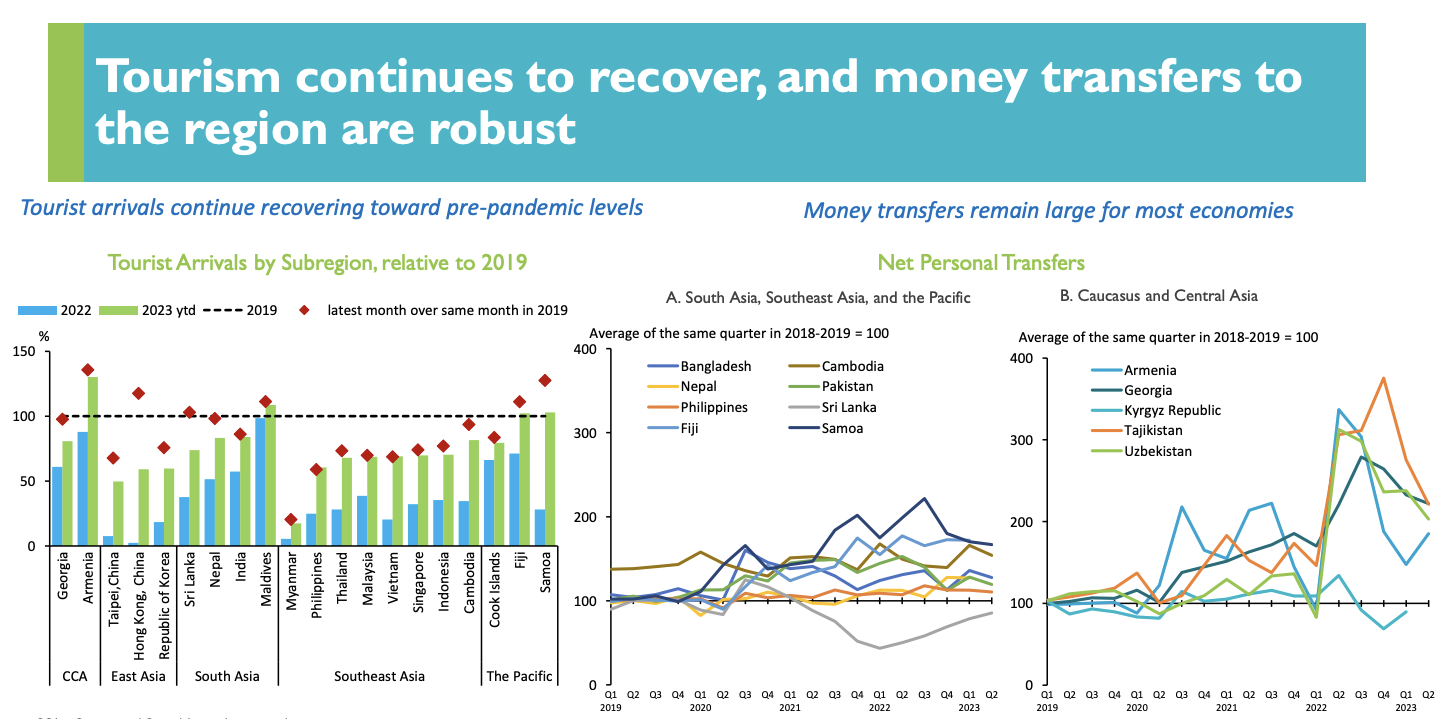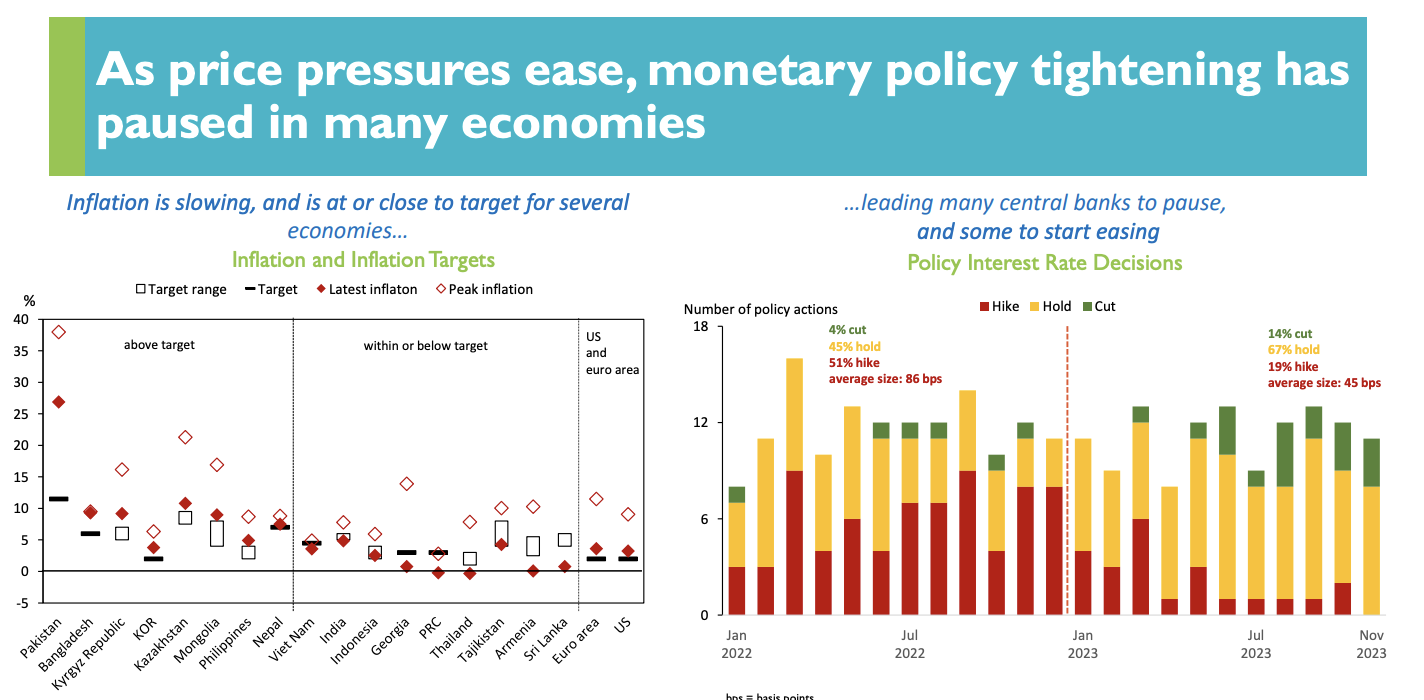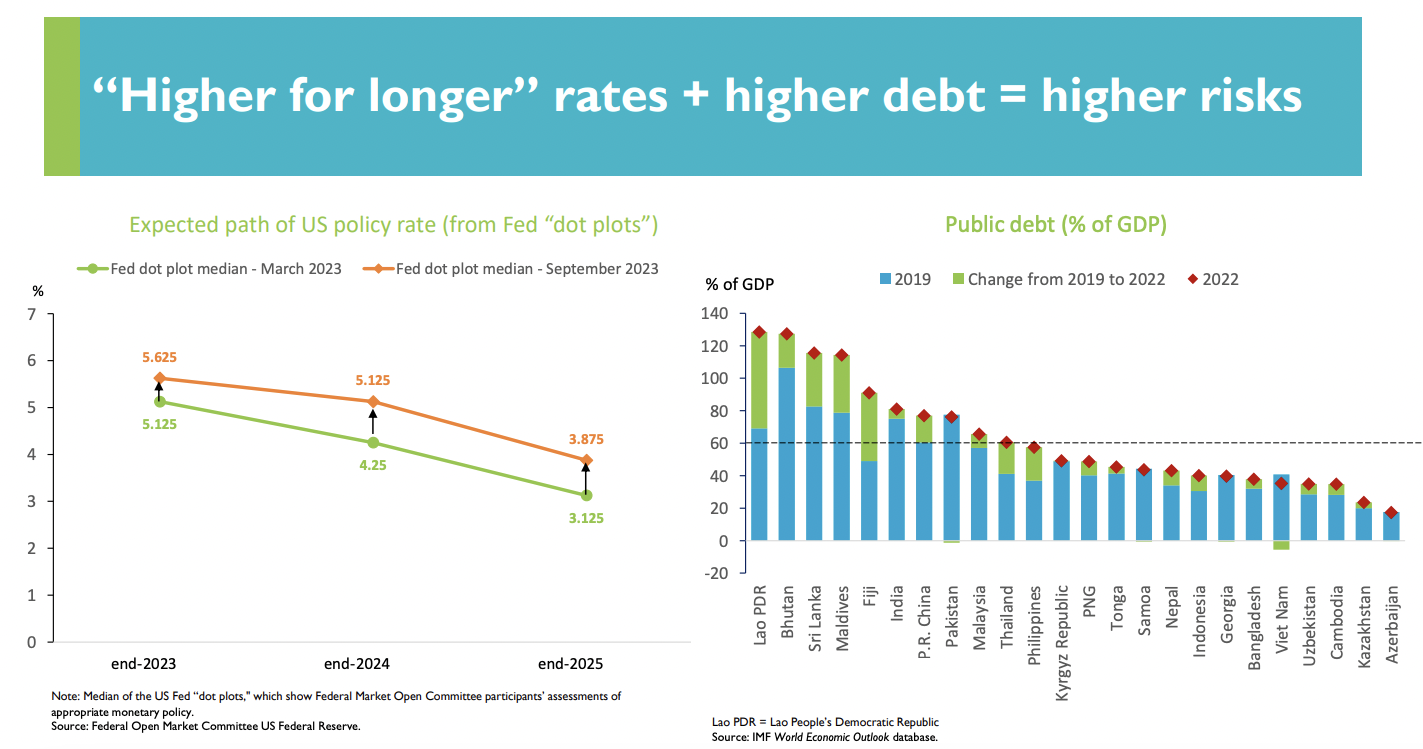The Asian Development Outlook for December 2023 paints a nuanced picture of the economic landscape in developing Asia. Despite facing challenges, the region exhibits continued growth driven by robust domestic demand, strong remittances, and a recovering tourism sector. The comprehensive analysis delves into the key economic indicators, policy trends, and potential risks highlighted in the report.
Growth and Inflation Trends
The report anticipates a positive trajectory for the region, forecasting a rise in regional growth from 4.3% in 2022 to 4.9% in 2023, with a slight dip to 4.8% in 2024. Notably, developing Asia's growth has been supported by healthy domestic demand, especially in consumption and investment. Price pressures are expected to ease, with inflation projected to decline from 4.4% in 2022 to 3.5% in 2023, with a slight uptick to 3.6% in 2024.

Regional Variations in Economic Performance
The economic performance varies across sub-regions. East Asia, driven by the People's Republic of China (PRC), is a significant contributor to the upward revision in the growth forecast for 2023. The Pacific region, however, experiences a more moderate growth trajectory. Notably, the PRC's property market undergoes an adjustment, impacting real estate investment, floor space started, and residential property prices.
External Factors Affecting Trade and Exports

The report sheds light on the external factors influencing trade and exports. The electronics cycle, a crucial component for many economies, has turned a corner, contributing to the stabilization of exports in 2023. Global demand, though slowing, remains resilient, with a focus on semiconductor sales and the overall performance of high-income technology exporters.
Tourism and Money Transfers
Tourism continues its recovery, and money transfers remain robust for most economies. The report underscores the importance of these factors in contributing to overall economic stability, with net personal transfers and tourist arrivals showing positive trends compared to pre-pandemic levels.

As inflation moderates, many central banks have paused or started easing monetary policy, contributing to stable financial market conditions. The report provides insights into policy interest rate decisions and their impact on inflation targets across various economies.

Despite the positive outlook, the report acknowledges several downside risks that could cloud the economic landscape. These include continued weakness in the property sector, the challenge posed by "higher for longer" interest rates in advanced economies, and external factors such as El Niño and geopolitical tensions affecting food and energy security.

Earlier Daryo reported the Asian Development Bank (ADB) has approved a $240mn loan to enhance the infrastructure of 700 kilometers of rural roads in Uzbekistan. This funding is intended to improve road safety, resilience to climate change, and promote rural development in the Central Asian country.
Follow Daryo's official Instagram and Twitter pages to keep current on world news.
Comments (0)